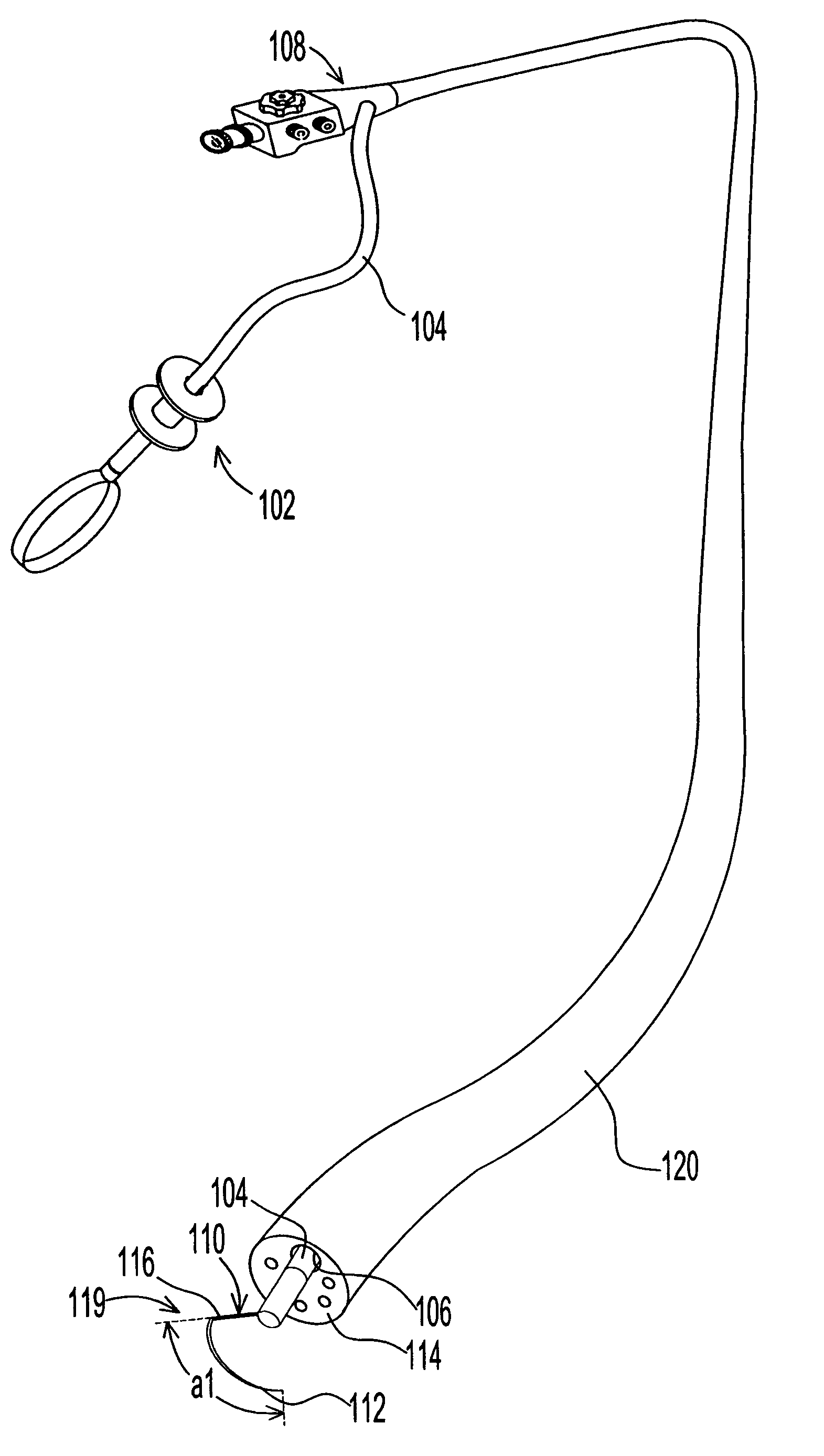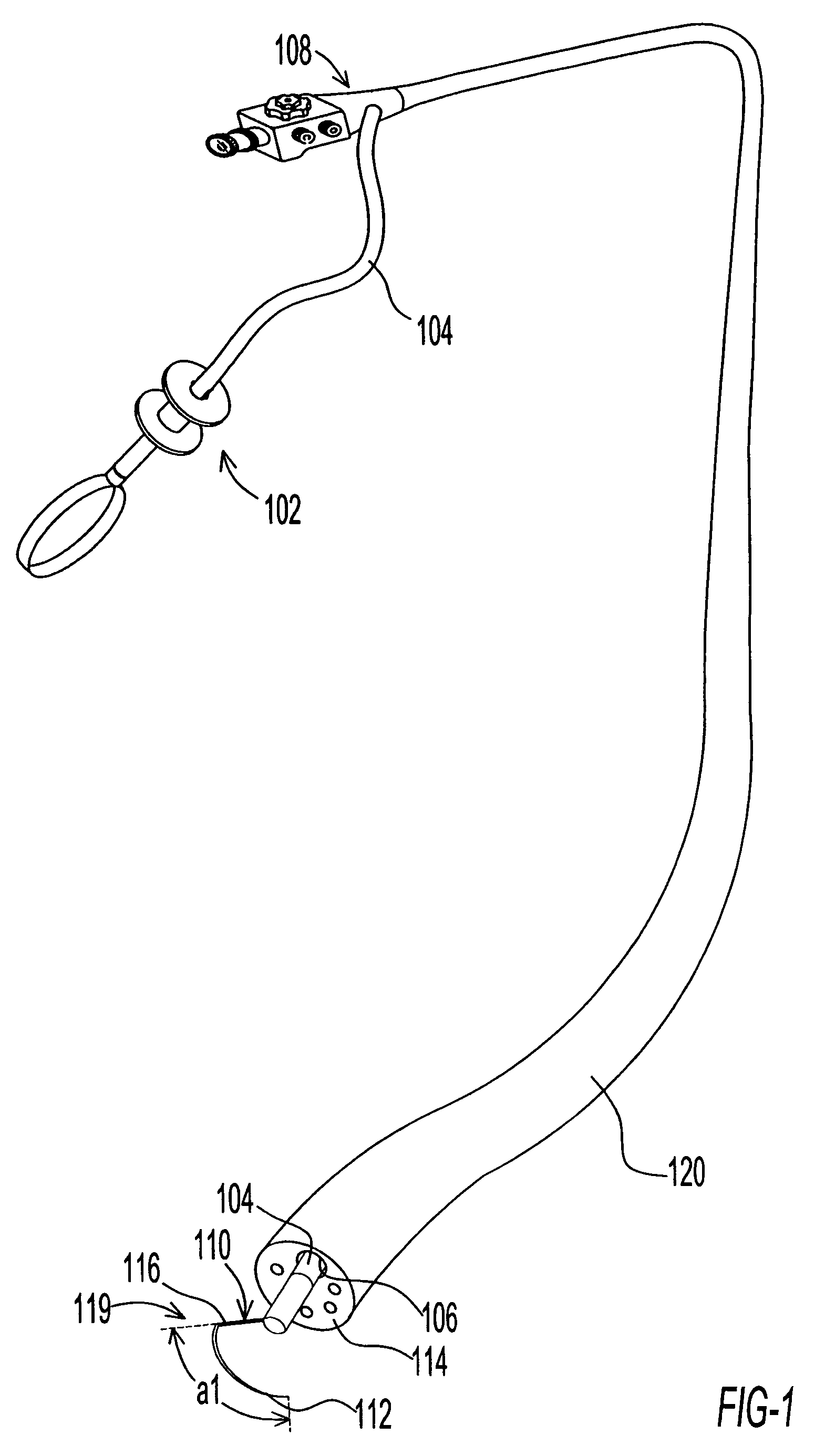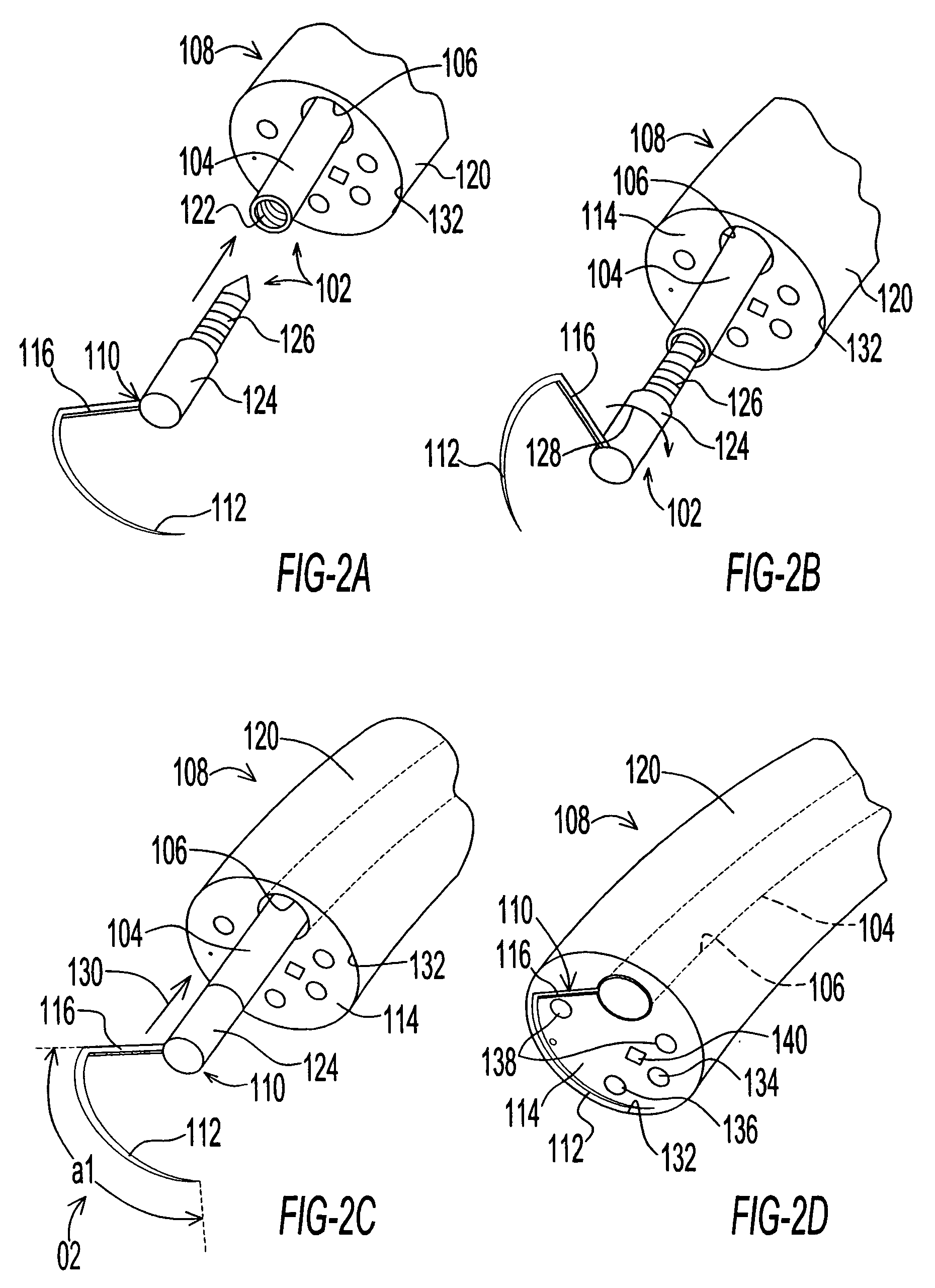Endoscopic instrument assembly with separable operative tip and associated medical method
a technology of endoscopic instruments and operative tips, which is applied in the field of endoscopic methods, can solve the problems of muscularis layer, poor surgical candidates for this difficult surgery, and significant complications of patients' lifestyles
- Summary
- Abstract
- Description
- Claims
- Application Information
AI Technical Summary
Benefits of technology
Problems solved by technology
Method used
Image
Examples
Embodiment Construction
[0047]The following are definitions of some terms used in this disclosure.
[0048]The term “wire element” is used herein to denote a thin elongate cutting member that functions to ablate or otherwise cut organic tissues of a patient in a shaving procedure. Such a cutting element is preferably but not necessarily made of an electrically conductive material, generally a metal or alloy. In that case cutting and cauterizing is effectuated in large part by hear generated owing to the conduction of electrical current. Alternatively, the wire may cause cutting by freezing, or by slicing through tissue such as a cheese cutter would slice through cheese, simply by virtue of the wire's sharpness. A wire element as disclosed herein may be flexible or substantially rigid or semi-rigid. A semi-rigid wire element has some flexibility but has an inherent spring bias that tends to returns the wire to a preselected configuration, such as a circular arc. The wire element may be connected at spaced poin...
PUM
 Login to View More
Login to View More Abstract
Description
Claims
Application Information
 Login to View More
Login to View More - R&D
- Intellectual Property
- Life Sciences
- Materials
- Tech Scout
- Unparalleled Data Quality
- Higher Quality Content
- 60% Fewer Hallucinations
Browse by: Latest US Patents, China's latest patents, Technical Efficacy Thesaurus, Application Domain, Technology Topic, Popular Technical Reports.
© 2025 PatSnap. All rights reserved.Legal|Privacy policy|Modern Slavery Act Transparency Statement|Sitemap|About US| Contact US: help@patsnap.com



